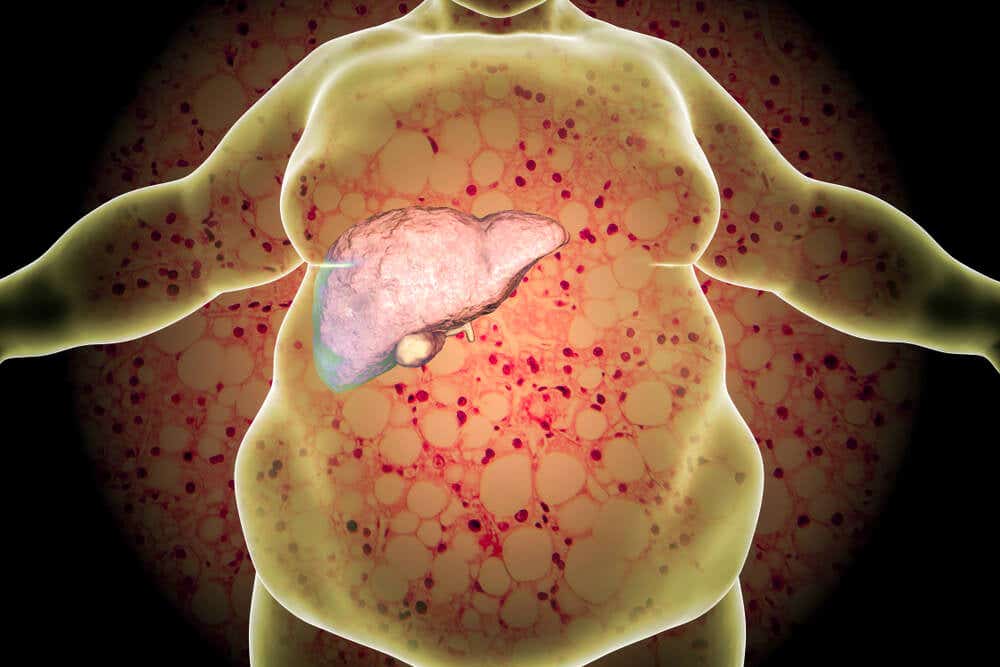Scientists identify a new way to combat fatty liver disease
Metabolic dysfunction-associated steatotic liver disease (MASLD), previously called non-alcoholic fatty liver disease, is a widespread health issue impacting about 25% of the global population.

Scientists have found a way to boost NAD+ levels in the liver, offering hope for treating MASLD and MASH. This novel approach could reduce inflammation, reverse fibrosis, and protect liver health. (CREDIT: CC BY-SA 4.0)
Metabolic dysfunction-associated steatotic liver disease (MASLD), previously called non-alcoholic fatty liver disease, is a widespread health issue impacting about 25% of the global population.
A more severe form, metabolic dysfunction-associated steatohepatitis (MASH), can lead to cirrhosis—a life-threatening condition characterized by advanced liver fibrosis. Understanding and addressing the underlying causes of these diseases is vital, as effective therapeutic options remain limited.
MASLD and MASH develop through a complex interplay of genetic, environmental, and lifestyle factors. Common contributors include obesity, unhealthy diets, and physical inactivity. These lead to fat accumulation in the liver, triggering inflammation and scarring that can progress to fibrosis and cirrhosis.
Key cellular processes, such as mitochondrial function, DNA repair, and protein balance, are disrupted, contributing to disease progression. Oxidative stress and the buildup of toxic lipid intermediates also play roles, making MASLD and MASH multifaceted challenges to treat.
One critical factor in the disease is the depletion of nicotinamide adenine dinucleotide (NAD+), a molecule essential for energy production, DNA repair, and controlling inflammation. NAD+ is involved in numerous metabolic pathways and is vital for maintaining liver health.
As NAD+ levels drop in MASLD/MASH, liver cells become more vulnerable to damage and inflammation. Researchers have long sought ways to restore NAD+ levels to prevent or reverse the damage caused by these conditions.
Recent research, published in the Journal of Hepatology, has highlighted the potential of targeting a specific enzyme, α-amino-β-carboxymuconate-ε-semialdehyde decarboxylase (ACMSD), to boost NAD+ levels.
ACMSD is primarily active in the liver and kidneys, where it modulates the conversion of the amino acid tryptophan into NAD+. While NAD+ can also be synthesized from other precursors, the tryptophan pathway is particularly important for sustaining NAD+ reservoirs in the liver.
Related Stories
Inhibition of ACMSD redirects the metabolic pathway, enhancing NAD+ production. This approach has shown promising effects in preclinical studies. By blocking ACMSD, researchers can elevate NAD+ levels in the liver, countering the harmful processes that drive MASLD and MASH progression.
A team led by Johan Auwerx at EPFL explored the therapeutic potential of ACMSD inhibition using rodent models and human liver organoids. The researchers used a compound called TLC-065 to inhibit ACMSD activity.
Mice fed a high-fat, Western-style diet to mimic human MASLD/MASH conditions developed liver damage, inflammation, and fibrosis. Treatment with TLC-065 significantly increased NAD+ levels in their livers.
The results were striking. Mice treated with the ACMSD inhibitor showed reduced liver inflammation, lower markers of DNA damage, and reversal of fibrosis. The compound’s effects extended to human liver organoids, where it also decreased DNA damage indicators.
These findings demonstrate the therapeutic promise of ACMSD inhibition, not only in reducing liver injury but also in restoring cellular health.
The study’s findings underscore the critical role of NAD+ in maintaining liver function and mitigating damage caused by MASLD and MASH. By targeting ACMSD, researchers have identified a novel strategy to enhance NAD+ synthesis and improve metabolic health.
This approach represents a shift in how these diseases might be treated, moving beyond symptom management to addressing underlying metabolic dysfunction.
Boosting NAD+ levels through ACMSD inhibition has several advantages. It targets fundamental processes such as energy metabolism, DNA repair, and inflammation control, offering broad protection against liver damage. The findings also pave the way for developing drugs that could provide a new lifeline for patients at risk of severe liver disease progression.
Further research is needed to translate these findings into clinical treatments. However, the study highlights the importance of targeting metabolic pathways and demonstrates that manipulating NAD+ levels holds great therapeutic promise.
As scientists continue to explore the role of enzymes like ACMSD in liver health, there is hope for more effective treatments that can prevent or reverse the devastating effects of MASLD and MASH.
Note: Materials provided above by The Brighter Side of News. Content may be edited for style and length.
Like these kind of feel good stories? Get The Brighter Side of News' newsletter.
Joshua Shavit
Science & Technology Writer | AI and Robotics Reporter
Joshua Shavit is a Los Angeles-based science and technology writer with a passion for exploring the breakthroughs shaping the future. As a contributor to The Brighter Side of News, he focuses on positive and transformative advancements in AI, technology, physics, engineering, robotics and space science. Joshua is currently working towards a Bachelor of Science in Business Administration at the University of California, Berkeley. He combines his academic background with a talent for storytelling, making complex scientific discoveries engaging and accessible. His work highlights the innovators behind the ideas, bringing readers closer to the people driving progress.



